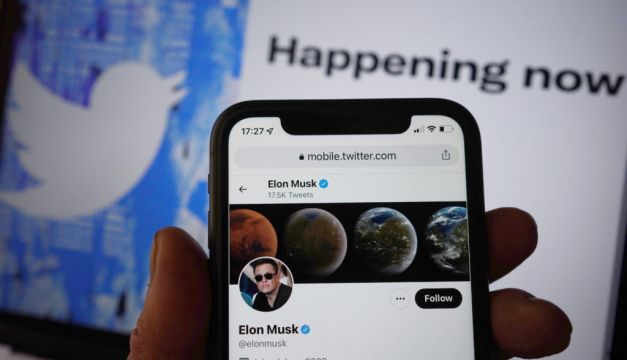Twitter has confirmed it has delayed the rollout of its updated Twitter Blue subscription, which will allow people to pay to be verified on the site, until after the US midterm elections on Tuesday.
New owner Elon Musk had announced that the company would let users buy a blue-tick verification badge by subscribing to Twitter Blue – a badge previously only given to prominent accounts which Twitter had identified as authentic.
Concerns were raised that this new system could be used by bad actors to pose as public figures and spread misinformation – particularly on the eve of major elections in the US – and now the social media firm’s head of safety and integrity has confirmed the Twitter Blue update is being deferred until after voting has closed.
In a wide-ranging Twitter thread about identification and verification on the site, Yoel Roth said: “The planned changes to Twitter Blue to make verification more widely available raise the stakes for this kind of impersonation.
“We’re particularly focused on the risks of impersonation of public officials in the context of the US 2022 midterm elections, and have made the decision not to launch Verification for Twitter Blue until after Election Day.”
Mr Roth also defended the Musk-led company’s decision to introduce a monthly fee of $8 (€8) for verification, arguing that it places another barrier between those wanting to spread spam and access to high-profile Twitter accounts from which to spread it.
“Most spam-fighting is a numbers game: Your objective is to raise the costs on spammers until their losses exceed their gains. When you do that, the spammers go away, and you win. Eight dollars per account raises the costs of spam a lot,” he said.
“It’s not just the eight dollars, though – this kind of in-app purchase requires bad actors to get through not only Twitter’s defences, but also those of mobile device manufacturers and payment processors. That’s not impossible for a sophisticated adversary – but it’s hard to do at scale.
“No solution to identity is perfect, and we’re iterating quickly to come up with the best approach here. We appreciate all the feedback, and will share more as our work progresses.”
We’re particularly focused on the risks of impersonation of public officials in the context of the US 2022 midterm elections, and have made the decision not to launch Verification for Twitter Blue until after Election Day.
Advertisement— Yoel Roth (@yoyoel) November 8, 2022
However, critics of the approach have argued that, rather than democratise the platform and weed out spam, the new paid-for verification system – which also gives subscribers priority placements in replies to other tweets – would instead create a two-tier Twitter of those able and willing to pay for the service and those who cannot or do not want to.
The delay to the Twitter Blue update continues a chaotic start to Mr Musk’s tenure at the company, and comes in the wake of a number of verified accounts, including those of comedians and satirists, being locked or suspended for parodying the billionaire in protest at the planned changes to the site.
Despite Mr Musk’s stance on allowing free speech and his tweeting that “comedy is now legal on Twitter” and that the blue-tick changes will give “power to the people”, he moved quickly to take action against the accounts of a number of celebrities who changed their Twitter names to “Elon Musk” and posted satirical messages about his takeover.

Reports in the US also suggest ongoing confusion around the mass staff layoffs the company began last week, with some claiming managers have begun asking some workers if they would be willing to return after the company realised that certain teams are now short-staffed.
It is estimated that around half of the company’s 7,500 employees were originally part of the cuts.
Meanwhile, the Tesla owner remains defiant in his thinking about the new direction of the company, claiming overnight that “Twitter usage is at an all-time high”.







